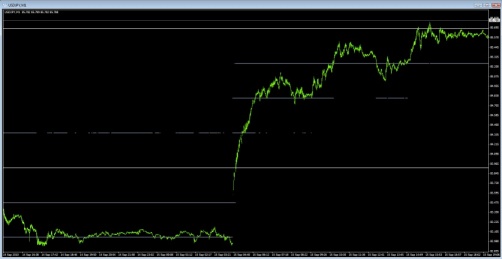Prior to the BOJ intervention earlier this week, there had been very little public discussion of the fact that China has been purchasing JGBs and that this had contributed to the appreciation in the value of the ¥en. In June China purchased ¥457Bln worth of JGBs and in July purchased a further ¥583Bln worth. Assessing the impact of this intervention purely in terms of the effect of the Yen’s appreciation against the US Dollar is to miss the point. The more interesting story is what is going on between China and Japan.
Superficially, likely motives for China’s JGB purchases include diversification out of the USD, since the majority of China’s accumulated surplus is recycled through the purchase of US Treasury debt. Naturally this exposes China to the inevitable depreciation in the value of the USD. However this is a cycle that cannot continue and the policy makers in China have probably worked this out and are thus seeking to engineer an outcome more to their liking than the gradual devaluation of their USD reserves.
Added to this, the recent public exchange of views between China and the US as to who would come off worse in a trade war takes on a new light. One interpretation would be that China has decided that the indebtedness of the American economy has now reached levels which point to its decreasing usefulness as a trading partner and thus wishes to end its reliance on the US as a target for its exports.
It must then turn to its Asian neighbours as trading partners.
Japan is the world’s second largest economy but has a debt to GDP ratio of 225%. It has so far managed through its own population purchasing JGBs, but is now facing an aging demographic and would be devastated by an inability to issue bonds at current 1% interest rates. Households have already stopped adding to their stock of JGBs, and the threat that rates in Japan will need to rise must now be looming large in the minds of Japanese policy makers. Should yields approach levels seen on European Government bond debt, i.e. 4%, rising debt service costs will threaten huge damage on the Japanese economy, threatening the Japanese state with bankruptcy. This threat would in turn open the floodgates of further QE. The yen would fall out of bed in a hyperinflationary blowoff.
Without doubt this would utterly derail the Chinese economy and threaten an unmanageable crisis on the Chinese, even possibly threatening the political status quo. The threat to China posed by the Japanese economic situation is thus so potentially grave that Japan’s problem is actually China’s problem also.
Thus the buying of JGBs by China could in fact be seen as the actions of a supporting partner, which are the result of an entirely aligned mutual self interest between the two nations.
Beijing would now be expected to react by tightening monetary policy via a rate hike. In August Chinese CPI jumped to 3.5%, indicating that they have to slow the economy. Tightening in this way would also be seen to be addressing the US political pressure on the Yuan exchange rate. It is clear now that the BOJ is willing to offset the impact on the strength of the Yen, and how they are going to do so.
As for the Fed, it is now operating with both hands tied behind its back evaluating whether to announce a baby-step QE2 at next week’s FOMC meeting, or at the November FOMC, which coincides with the Mid-Term Election Day.
As an aside, it should be noted that if a Japan meltdown is not prevented, the Japanese would also have to dump their holdings of US Treasuries, currently $750bn or 10pc of the entire stock of US Treasury debt, as well as selling Gilts and Belgian bonds, precipitating other government bond market funding crises and triggering an international bond rout spiking interest rates higher and sending stock markets into meltdown.
The interconnectedness of the whole system renders it non-linear and chaotic. I don’t see a happy ending.

- this is what ¥2 trillion looks like
